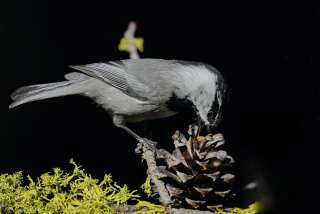Gardening : Cycads Around When the Dinosaurs Roamed : These plants are easy to grow in a warm climate and almost seem to thrive on neglect.
As you stroll among the cycads at the Huntington Botanical Garden, you are taking a walk back in time, over 230 million years ago. During this Mesozoic Age, before the existence of flowering plants, ferns and cycads flourished on earth.
Fossils indicate that cycads have changed very little over the last 100 million years. In the modern landscape, cycads are botanically interesting, easy to grow and seem to thrive on neglect.
Cycads, or “Sago Palms” as they are commonly called, carry a name derived from the Greek word cyckos , which means palm-like. Actually, cycads are cone-bearing gymnosperms, closely related to pines, and have nothing in common with palms except for a similar appearance.
Cycads were distributed all over the world during the dinosaur age, then gradually declined in number until the present. Now there are only 100 to 150 species remaining, all confined to the tropics, subtropics and warm temperate regions.
Cycas revoluta , the most common cycad found in gardens and landscapes, will grow to about 10 feet. This is the hardiest of all the cycads and is native to Japan. A Cycas revoluta can be effectively incorporated into many types of landscape designs, from tropical to desert schemes. It can be grown in shade or full sun, even in Palm Springs. In Japan it is a popular bonsai plant.
Cycads do very well in containers and make wonderful potted patio plants. Large cycads can be used as a backdrop or as a focal point. Small cycads can get lost in a landscape all by themselves and are best used as accents, in a grouping with larger cycads or in a container.
For a tropical effect, plant cycads with palms, ferns and Clivia miniata , Kaffir Lily. Combine cycads with aloes and other succulents for a drought-tolerant, low maintenance design.
Cycads can adapt to almost any garden environment and can tolerate heat, wind and drought. They do best in a well-drained soil containing organic matter. If over-watered, root rot can occur, particularly in heavy soils. Symptoms of root rot are burning on the edges of new leaves or death of the stem.
To help prevent root rot in heavy soils, especially if you are planting cycads along with plants that need lots of water, amend the soil before planting with plenty of organic matter, such as planter mix or redwood compost.
Light intensity as well as fertilizer can affect foliage color. Cycads grown in the shade are usually a deeper green than sun-grown ones. Species with blue leaves, such as the spiny, mean-looking Encephalartos horridus need full sun to maintain their blue color.
Cycads like to be fertilized three or four times a year with a liquid fertilizer such as a 20-20-20. Yellowing, browning or curling of leaves may indicate a micro-nutrient deficiency--treat with a fertilizer containing magnesium and manganese.
The only pest cycads seem to be bothered by is scale. If you see spots on the leaves, check the undersides of the leaves for small round scale. Malathion or Diazinon, preferably mixed with Volck oil, can be used as a spray to control this insect.
All cycads are dioecious, which means a plant is either male or female. Male plants produce pollen-bearing cones and female plants produce seed-bearing cones. Cones form in the center of the leaves, and the cones of some species are colorful and quite beautiful, lasting up to six months on the plant. Male cones are generally smaller, more slender and not as long lasting as female cones.
The female cone of Encephalartos altensteinii can weigh up to 90 pounds. After bearing a cone a cycad may go into a resting period for three to four years during which neither leaves nor cones are produced. Cycads usually develop only one new set of leaves a year, growing in a whorl in the center of the plant. Some years you may not see any new leaves, or it is possible to get two sets of leaves in a year.
Although cycads can be propagated by seed, it is much easier to start a new plant from suckers taken from the base of the plant. Viable seed is produced only when plants of both sexes are growing together and form cones at the same time. To propagate, simply dig up a “baby” plant (it may be just a few leaves) and transplant it into a pot or in the ground in well-drained soil. Be patient, as it may take up to two yeas to see any new growth.
The cycad collection at the Huntington Botanical Garden in San Marino is one of the largest in the United States. Some of the cycads have been in the collection since 1910, and some are said to be hundreds of years old. At the Huntington you can see many spectacular species and representatives from all the 10 remaining genera of cycads left on earth.






